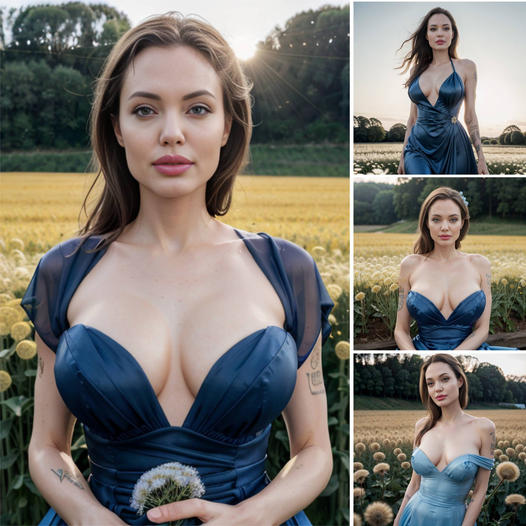Costume Designer Karen Patch has said “In every film there’s a place to make a character stand out in an iconic way.” That essential moment to reveal a transformed character to the audience becomes even more memorable in formal wear. Ever since the Charles Perrot transformed Cinderella from a sooty maid into a princess via a gown, formal dresses have been the way to show an ingénue’s inner beauty. Over the past fifty years of film-making several gowns have dazzled audiences, influenced fashion and earned a place in pop culture. 2010’s standout costume for instance is Nina’s white chiffon gown from The Black Swan, designed by Rodarte. Having already covered Nina’s swan song gown, I’ve decided to list some of my other favorite film formal wear, in no particular order.
Giselle’s Lavender Gown from Enchanted (2007)
 Giselle’s sleek gown displayed her preference for the real world with Robert over her fairytale life with Edward.
Giselle’s sleek gown displayed her preference for the real world with Robert over her fairytale life with Edward.
” data-medium-file=”https://threadbythread.files.wordpress.com/2011/02/enchanted.jpg?w=199″ data-large-file=”https://threadbythread.files.wordpress.com/2011/02/enchanted.jpg?w=590″ data-mce-src=”https://threadbythread.files.wordpress.com/2011/02/enchanted.jpg?w=590 h=888″>
Giselle’s sleek gown displayed her preference for the real world with Robert over her fairytale life with Edward.
While the memorable dress in Disney’s 2007 live action animated combo was Giselle’s volumous white wedding dress, the real scene stealer was her streamlined lavender gown she wears to the ball. Costume Designer Mona May, designed the gown herself. May describes what the dress symbolizes for Giselle,
“You start with her as a very animated character. Very fake. So you have the very, very big eyelashes, porcelain skin, and big, big sleeves. As she’s becoming more a part of our world, living with us on Earth, we begin to strip that stuff. We start to strip the corset, strip the porcelain skin so you start seeing more imperfection. And, when she decides to stay in our world, in the ballroom, she becomes the elegant, young, modern girl.”
The dress went on to influence runway fashion, with similar dresses popping up in Monique Lhuillier and Bill Bliss collections.
Andie’s Yellow Gown from How to Lose a Guy in 10 Days (2003)
 Andie’s yellow gown, along with the matching 84 karat yellow daond, shows how she stands apart from all other women in Ben’s life, and her true feelings towards him.
Andie’s yellow gown, along with the matching 84 karat yellow daond, shows how she stands apart from all other women in Ben’s life, and her true feelings towards him.
” data-medium-file=”https://threadbythread.files.wordpress.com/2011/02/kateyellow.png?w=300″ data-large-file=”https://threadbythread.files.wordpress.com/2011/02/kateyellow.png?w=564″ data-mce-src=”https://threadbythread.files.wordpress.com/2011/02/kateyellow.png?w=590″>
Andie’s yellow gown, along with the matching 84 karat yellow daond, shows how she stands apart from all other women in Ben’s life, and her true feelings towards him.
Vivianne’s Red Opera Gown from Pretty Woman
 The red gown symbolized Vivian’s increased value to Edward but also her own newfound self confidence, on display for the world.
The red gown symbolized Vivian’s increased value to Edward but also her own newfound self confidence, on display for the world.
” data-medium-file=”https://threadbythread.files.wordpress.com/2011/02/pretty-woman.jpg?w=300″ data-large-file=”https://threadbythread.files.wordpress.com/2011/02/pretty-woman.jpg?w=590″ data-mce-src=”https://threadbythread.files.wordpress.com/2011/02/pretty-woman.jpg?w=800 h=480″>
 Roberts’ now iconic laugh at Gere’s closing of the jewelry box was an improvisation done to get her into character as her spirits were down due to the recent breakup of her and Dylan McDermott’s engagement.
Roberts’ now iconic laugh at Gere’s closing of the jewelry box was an improvisation done to get her into character as her spirits were down due to the recent breakup of her and Dylan McDermott’s engagement.
” data-medium-file=”https://threadbythread.files.wordpress.com/2011/02/prettywoman2.jpg?w=300″ data-large-file=”https://threadbythread.files.wordpress.com/2011/02/prettywoman2.jpg?w=590″ data-mce-src=”https://threadbythread.files.wordpress.com/2011/02/prettywoman2.jpg?w=590″>
Roberts’ now iconic laugh at Gere’s closing of the jewelry box was an improvisation done to get her into character as her spirits were down due to the recent breakup of her and Dylan McDermott’s engagement.
 Marilyn Vance’s sketch of the red dress, the opera Vivian and Edward see, La Traviata, mirrors the story of their relationship.
Marilyn Vance’s sketch of the red dress, the opera Vivian and Edward see, La Traviata, mirrors the story of their relationship.
” data-medium-file=”https://threadbythread.files.wordpress.com/2011/02/pretty-womansketch.jpg?w=240″ data-large-file=”https://threadbythread.files.wordpress.com/2011/02/pretty-womansketch.jpg?w=410″ data-mce-src=”https://threadbythread.files.wordpress.com/2011/02/pretty-womansketch.jpg?w=590″>
Marilyn Vance’s sketch of the red dress, the opera Vivian and Edward see, La Traviata, mirrors the story of their relationship.
Pretty Woman, skyrocketed Julia Roberts into stardom and required Roberts to live up to the film’s title. This meant that costume designer Marilyn Vance had to create a wardrobe in which Roberts would look good as both a common prostitute and aristocratic girlfriend. The gown that prostitute Vivian wears while accompanying playboy millionaire Edward to the opera had to be dazzling to both the character and the audience. Vance created an off the shoulder fitted gown that flared down to billowing chiffon, paired with fitting white opera gloves. Vance had to fight to have to gown dyed red, director Gary Marshall insisted on black, stating that red would clash with Roberts’ flaming locks. Vance had three gowns made into red black and white for Marshall to approve, the two ultimately deciding on red. While Roberts’ sweeping hairdo might not have lasted the test of time, Vance states that several times a year husbands order exact replicas of the iconic dress for their wives from Western Costumes, the pattern’s owner.
Sabrina’s White Gown from Sabrina (1954)
 Sabrina’s décolleté gown launched Hepburn into fashion icon status and solidified a lifelong collaboration with Givenchy.
Sabrina’s décolleté gown launched Hepburn into fashion icon status and solidified a lifelong collaboration with Givenchy.
” data-medium-file=”https://threadbythread.files.wordpress.com/2011/02/sabrina2.jpg?w=270″ data-large-file=”https://threadbythread.files.wordpress.com/2011/02/sabrina2.jpg?w=405″ data-mce-src=”https://threadbythread.files.wordpress.com/2011/02/sabrina2.jpg?w=590″>
Sabrina’s décolleté gown launched Hepburn into fashion icon status and solidified a lifelong collaboration with Givenchy.
Audrey Hepburn’s career skyrocketed in 1953 with her screen debut in Roman Holiday. Her performance as the innocent but headstrong Princess Anne, experience love and freedom for the first time in Rome, earned her rave reviews and that year’s Best Actress Oscar. Hepburn light up the screen in costume design power house Edith Head’s designs. Head was excited to have the petite beauty as her muse, especially with the whole world looking at what Hepburn would don in her next film. Audrey had different ideas though, she wanted to choose parts of her wardrobe for her next film, like other big stars. Happy to oblige for their new starlet, Paramount granted her permission to fly to Paris and choose three new dresses for her next film about a gawky chauffeur’s daughter who returns home from cooking school in France transformed, much to the surprise of her wealthy employers sons.
Hepburn arrived at French designer Hubert de Givenchy store in Paris, much to his surprise as he was expecting film star Katherine Hepburn, not the still unknown Audrey Hepburn (Roman Holiday had yet to be released in Europe, and she hadn’t won her Oscar yet). Givenchy’s showed her to a showroom and left her to try on whatever dresses she wished, not bothering to cater to her. Audrey choose a small black dress that fit like a glove, much to Givenchy’s amazement as he could find no model to fit into it (Hepburn’s notoriously small frame was due both in part to her strict small portions and Mediterranean diet and malnutrition in her childhood in Nazi occupied Netherlands.) Hepburn’s classic poise and small frame made her his muse and he drew up designs to fit her, “She wanted a bare-shouldered evening dress modified to hide the hollows behind her collarbone. What I invented for her eventually became a style so popular that I named it ‘décolleté Sabrina.’”
Credit was not originally given to the designer however, Edith Head took credit for the gown designs for some time. She was reportedly furious that Hepburn had gone over her head at Paramount to secure gowns from Givenchy. Givenchy sat back and quietly let Head take credit for the gowns but ended up striking a deal with Hepburn, in which he would design at least three of her gowns in her modern set films. The collaboration lasted for years and eventually credit was given to him for his work on Sabrina.
Cecilia’s Green Gown from Atonement (2007)
 Barely visible to the casual viewer is the bow pattern on the dress front, made from small laser cut holes.
Barely visible to the casual viewer is the bow pattern on the dress front, made from small laser cut holes.
” data-medium-file=”https://threadbythread.files.wordpress.com/2011/02/atonement-dress.jpg?w=199″ data-large-file=”https://threadbythread.files.wordpress.com/2011/02/atonement-dress.jpg?w=590″ data-mce-src=”https://threadbythread.files.wordpress.com/2011/02/atonement-dress.jpg?w=590 h=888″>
Barely visible to the casual viewer is the bow pattern on the dress front, made from small laser cut holes.
 The fabric overlaps in the lower back to symbolize the current and pending complexity of Cecilia and Robbie’s love affair.
The fabric overlaps in the lower back to symbolize the current and pending complexity of Cecilia and Robbie’s love affair.
” data-medium-file=”https://threadbythread.files.wordpress.com/2011/02/atonementgreendress.jpg?w=199″ data-large-file=”https://threadbythread.files.wordpress.com/2011/02/atonementgreendress.jpg?w=590″ data-mce-src=”https://threadbythread.files.wordpress.com/2011/02/atonementgreendress.jpg?w=590 h=888″>
The fabric overlaps in the lower back to symbolize the current and pending complexity of Cecilia and Robbie’s love affair.
 Durran’s sketch of the famous gown.
Durran’s sketch of the famous gown.
” data-medium-file=”https://threadbythread.files.wordpress.com/2011/02/atonementsketch.jpg?w=200″ data-large-file=”https://threadbythread.files.wordpress.com/2011/02/atonementsketch.jpg?w=200″ data-mce-src=”https://threadbythread.files.wordpress.com/2011/02/atonementsketch.jpg?w=590″>
Durran’s sketch of the famous gown.
Atonement author Ian Mc Ewan, spent several pages on Cecilia choosing her dress for the eventful dinner in the novel. He describes her final choice, “ As she pulled it on she approved of the firm caress of the bias cut through the silk of her petticoat, and she felt sleekly impregnable, slippery and secure; it was a mermaid who rose to meet her in her own full-length mirror.” Film director Joe Wright insisted to costume designer Jacqueline Durran that the gown must have the same feel. Durran came up with a flowing bias cut green silk gown that would flow with actress Keira Knightley’s movement, as if she were underwater.
The product audiences see on film is actually a composite of about four dresses Durran had made to achieve just the right look. The gown’s beautiful green color seems to change shades in different scenes because it does. Over 100 yards of white silk was purchased and sent to a London dyer who came up with three shades of green. The dress starts as a brighter green before Cecilia’s secret crush Robbie arrives at the house, to reflect her anxiety at confronting him about his risqué love letter. For Cecilia and Robbie’s passionate sex scene in the library the gown is darker, more of a jungle green to reflect their animal attraction. Running with the theme of animal attraction Durran made the gown in several pieces so it would flow correctly on Knightley from scene to scene. In the library scene Durran added slits to the gown both to allow easy access for the paramours but also to make Cecilia akin to a pinned grasshopper. It serves as a terrifying image for younger sister Briony to stumble upon when she discovers the two. The knot at the front of the dress harks back to the classic thirties design but also symbolizes Cecilia’s virginity. Durran herself acknowledges that the dress is not strictly period
“I know quite well that I didn’t make a Thirties dress. We were creating a remembered moment of someone else, so I pulled details I liked from the Twenties and Thirties and worked out which ones would combine together to make something that suited Keira.”
Even the daond star hairpins, daond cuff bracelet, and gold pumps Cecilia dons to accessorize the gown garnered public attention. The hairpins and bracelet designed by Chanel were donned by Knightley again, as their spokesmodel. Only ten of the gold leather cage sandal pumps were made after the film, each fetching for over $600. Durran did not win at the 2007 Oscars for her work on Atonement, but her design earned a definite top spot in film history.
Lisa’s Quarter Sleeve Gown from Rear Window (1954)
 It was a small stretch for Grace Kelly to play the beautiful model girlfriend to Jimmy Stewart.
It was a small stretch for Grace Kelly to play the beautiful model girlfriend to Jimmy Stewart.
” data-medium-file=”https://threadbythread.files.wordpress.com/2011/02/gracekelly_rearwindow_00.jpg?w=191″ data-large-file=”https://threadbythread.files.wordpress.com/2011/02/gracekelly_rearwindow_00.jpg?w=318″ data-mce-src=”https://threadbythread.files.wordpress.com/2011/02/gracekelly_rearwindow_00.jpg?w=590″>
 Head’s deigns played to Kelly’s strong suits, a small waist and petite shoulders and hid her lesser assets, namely her small chest.
Head’s deigns played to Kelly’s strong suits, a small waist and petite shoulders and hid her lesser assets, namely her small chest.
” data-medium-file=”https://threadbythread.files.wordpress.com/2011/02/gkedithhead-1.jpg?w=239″ data-large-file=”https://threadbythread.files.wordpress.com/2011/02/gkedithhead-1.jpg?w=239″ data-mce-src=”https://threadbythread.files.wordpress.com/2011/02/gkedithhead-1.jpg?w=590″>
Edith Head’s Sketch for the Gown
Edith Head only remained upset at the loss of her newest muse Audrey Hepburn to Givenchy for a short time. In 1953 she began work on Alfred Hitchcock’s newest thriller, Rear Window, whose female lead was the talk of the town Grace Kelly. Kelly was a Philadelphia socialite who had an easy-going attitude paired with good manners (qualities that would later charm Prince Rainer of Monaco, whom she would quit acting to marry). Head and Kelly hit it off immediately, becoming confidants and collaborators.
Hitchcock was careful in how he dressed Kelly’s character Lisa in the film, wanting to make sure she reflected high society fashion but still maintained symbolism. “There was a reason for every colour Grace wore, every style, and he was absolutely certain about everything…Hitch [sic] wanted her to appear like a piece of Dresden china, something slightly untouchable.” So Lisa’s introduction to the audience had to show her love of fashion and beauty but still come across as vulnerable. Head designed a black three quarter sleeve velvet and chiffon ballgown with accents of black beaded branches. The gown referred back to Christian Dior’s New Look and made Kelly seemingly float on screen. Head would continue to dress Kelly both on and beyond the screen as an actress and princess.
Daisy’s Red Dress from The Curious Case of Benjamin Button (2009)
 Daisy’s showed her new sophisticated style and womanly figure to Benjamin for the first time.
Daisy’s showed her new sophisticated style and womanly figure to Benjamin for the first time.
” data-medium-file=”https://threadbythread.files.wordpress.com/2011/02/button3.jpg?w=300″ data-large-file=”https://threadbythread.files.wordpress.com/2011/02/button3.jpg?w=400″ data-mce-src=”https://threadbythread.files.wordpress.com/2011/02/button3.jpg?w=590″>
Daisy’s showed her new sophisticated style and womanly figure to Benjamin for the first time.
 West made some alterations to the gown’s original design to reflect the Dior’s New Look which so influenced 50s fashion.
West made some alterations to the gown’s original design to reflect the Dior’s New Look which so influenced 50s fashion.
” data-medium-file=”https://threadbythread.files.wordpress.com/2011/02/button2.jpg?w=215″ data-large-file=”https://threadbythread.files.wordpress.com/2011/02/button2.jpg?w=285″ data-mce-src=”https://threadbythread.files.wordpress.com/2011/02/button2.jpg?w=590″>
West made some alterations to the gown’s original design to reflect the Dior’s New Look which so influenced 50s fashion.
 The dress had to enable Daisy to show off her ballet training for her true love Benjamin, and still stand out against the foggy background.
The dress had to enable Daisy to show off her ballet training for her true love Benjamin, and still stand out against the foggy background.
” data-medium-file=”https://threadbythread.files.wordpress.com/2011/02/button4.jpg?w=300″ data-large-file=”https://threadbythread.files.wordpress.com/2011/02/button4.jpg?w=590″ data-mce-src=”https://threadbythread.files.wordpress.com/2011/02/button4.jpg?w=590 h=395″>
The dress had to enable Daisy to show off her ballet training for her true love Benjamin, and still stand out against the foggy background.
Further proof that redheads can wear red, the strawberry hued Daisy dons this evening gown for a reunion with her childhood crush Benjamin, leaving both him and the audience breathless. Costume Designer Jacqueline West had to fight to have the dress included in the film “It was originally designed for a nightclub scene in the ’40s in New Orleans, and at the last minute I decided to have her dance in it. But she really sold that dress to David [Fincher, the director]. David doesn’t like red. But when I put it on Cate, she said, “Let me show David.” She said to him, “It has to be red.” She said that David, never having worn a red dress himself, “just doesn’t understand the power of it.”
Daisy comes back to New Orleans from New York, where she is a ballet dancer working with influential choreographers such as George Balanchine and Martha Graham, so her dress had to reflect the same sort of cutting edge as her dance work. West looked to Dior’s influential new Look collection to provide the basic outline of the dress, then added some modifications so it would compliment Daisy’s dance not hide it. The dress moves beautifully with Daisy’s moves, it’s sensual without being to revealing. The fiery color of the dress represents her sensuality but also reflects Daisy’s hastiness and impatience for Benjamin’s reciprocation. While Daisy ultimately fails when trying to seduce Benjamin in the dress, she succeeds in making a lasting impression, in his and the audience’s mind.



